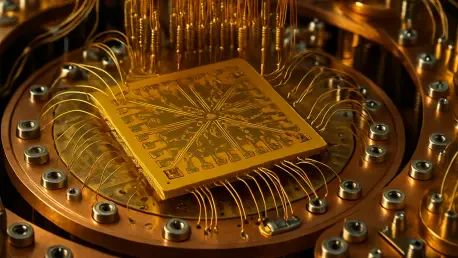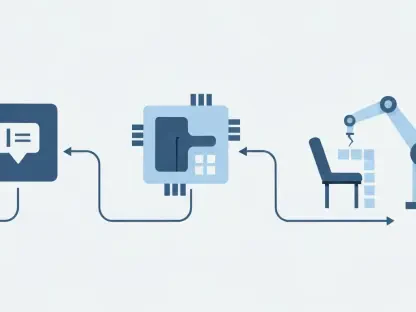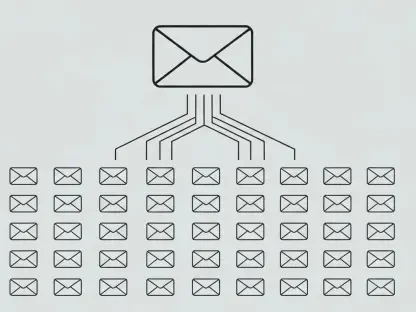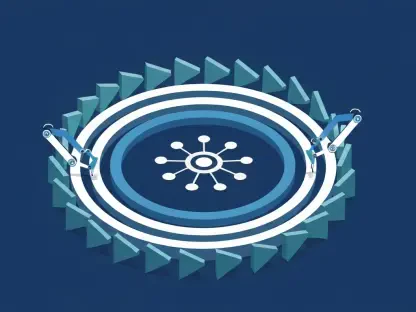In a remarkable leap forward for quantum computing, the California Institute of Technology (Caltech) has introduced a groundbreaking achievement that could redefine the boundaries of technology and push the limits of what is possible. Announced on September 24, this development showcases the world’s largest quantum array, comprising an astonishing 6,100 neutral-atom qubits with an accuracy rate of 99.98%. This milestone doesn’t just break records for the sheer number of qubits; it also challenges long-held assumptions about the trade-offs between scale and precision in quantum systems. As the scientific community races to build practical quantum computers capable of outperforming classical machines, this advancement brings society closer to unlocking transformative applications in fields like cryptography, material science, and artificial intelligence. The significance of this moment lies not only in the numbers but in the promise of what quantum technology could achieve.
This breakthrough taps into the fundamental difference between quantum and classical computing. While traditional computers rely on bits to process information as either 0 or 1, quantum systems utilize qubits that can exist in a state of superposition, embodying both states at once. This unique property enables quantum computers to handle complex calculations at speeds unimaginable with conventional hardware. Caltech’s achievement stands as a testament to the potential of scaling quantum systems while maintaining reliability, setting a new standard for the industry. It sparks curiosity about how such innovations might soon reshape the understanding of computational power and solve problems previously thought unsolvable.
Quantum Computing’s Leap Forward
Breaking Barriers in Scale and Precision
The journey to practical quantum computing has long been hindered by the challenge of scalability, but Caltech’s latest development marks a turning point. With an array of 6,100 neutral-atom qubits, the team has shattered previous limits, where arrays typically housed only a few hundred qubits. This dramatic increase is crucial because solving the most intricate scientific and technological problems may require hundreds of thousands of qubits. The ability to construct such a large-scale system without compromising performance signals a major step toward realizing quantum computing’s full potential. Led by Professor Manuel Endres, the project demonstrates that massive quantum arrays are no longer a distant dream but a tangible reality, paving the way for applications that could revolutionize industries ranging from drug discovery to cybersecurity.
Beyond sheer numbers, the precision achieved by the Caltech team is equally groundbreaking. A staggering accuracy rate of 99.98% when manipulating individual qubits defies the common belief that scaling up inherently leads to more errors. Additionally, the qubits maintained superposition for approximately 13 seconds—nearly ten times longer than earlier efforts with comparable systems. This durability challenges the notion that larger quantum systems must sacrifice quality for quantity. Such high fidelity in a large array suggests that future quantum computers could handle complex tasks with minimal error, a critical factor for practical implementation. The success in balancing scale with precision sets a new benchmark, inspiring further research into how quantum systems can be refined for real-world use.
Exploring New Heights in Quantum Capability
Another dimension of this achievement lies in its implications for computational power. Quantum systems, with their ability to process multiple states simultaneously, promise to tackle problems beyond the reach of classical computers. The Caltech array’s scale brings researchers closer to simulating intricate natural phenomena, such as exotic phases of matter or quantum fields that shape the fabric of space-time. This capability could unlock discoveries in physics and chemistry that were previously unattainable. As the field moves toward practical applications, the significance of building larger, more stable quantum arrays cannot be overstated—it’s a foundational step toward harnessing quantum mechanics for scientific exploration.
Moreover, the breakthrough highlights the unique advantages of neutral-atom qubits over other quantum architectures. Unlike systems that are hardwired and less adaptable, this approach offers a level of control that could prove invaluable for future advancements. The precision and scale demonstrated by the Caltech team suggest that quantum computing is entering a phase where theoretical concepts are becoming actionable tools. This progress fuels optimism that the next generation of quantum machines will not only match but surpass the capabilities of today’s most powerful supercomputers, opening doors to innovations that remain unimaginable at present.
Innovative Techniques Behind the Breakthrough
Harnessing Optical Tweezers
Central to Caltech’s success is the innovative use of optical tweezers, a technique that has redefined how quantum arrays are constructed. By splitting a single laser into 12,000 tightly focused beams, the team created a grid of 6,100 cesium atoms within a vacuum chamber, each atom trapped with pinpoint accuracy. This method allows for an unprecedented level of control over the arrangement of qubits, making it possible to build a quantum system of this magnitude. The tangible scale of the array underscores the progress in quantum hardware, showing that what was once a theoretical concept can now be physically realized. Such a technique not only showcases technological ingenuity but also provides a blueprint for scaling quantum systems further in the coming years.
The impact of this approach extends beyond mere construction to the broader field of quantum engineering. Optical tweezers offer a practical solution to one of the most persistent challenges in quantum computing: arranging and maintaining large numbers of qubits without introducing errors. The precision with which cesium atoms are positioned ensures that each qubit can function as intended, contributing to the system’s overall reliability. This method stands as a testament to how innovative tools can bridge the gap between experimental research and functional technology. As researchers continue to refine these techniques, the potential for even larger and more efficient quantum arrays grows, promising exciting developments on the horizon.
Precision Engineering in Quantum Design
Delving deeper into the methodology, the use of optical tweezers represents a fusion of physics and engineering that pushes quantum technology forward. The ability to trap individual atoms with such accuracy allows for a level of customization that other quantum systems struggle to achieve. This precision engineering ensures that the array operates as a cohesive unit, minimizing disruptions that could compromise performance. The result is a quantum system that not only boasts an impressive qubit count but also maintains the integrity needed for complex computations. This balance of innovation and reliability highlights the importance of interdisciplinary approaches in tackling the challenges of quantum computing.
Furthermore, the scalability of this technique offers a glimpse into future possibilities for quantum hardware. As the demand for larger systems grows, methods like optical tweezers could become standard in the design of quantum arrays, providing a flexible and efficient way to expand qubit numbers. The success of this project at Caltech serves as a proof of concept, demonstrating that cutting-edge tools can overcome traditional barriers in quantum research. By focusing on both the minutiae of atom placement and the broader goal of system stability, this approach lays critical groundwork for the evolution of quantum technology into a practical, everyday resource.
Future Horizons in Quantum Technology
Flexibility and Error Correction
A standout feature of Caltech’s quantum array is the flexibility offered by neutral-atom qubits, setting them apart from more rigid architectures like superconducting circuits. These qubits can be moved across the array—up to hundreds of micrometers—while preserving their superposition state, a feat likened to carrying a full glass of water without spilling a drop. This mobility is not just a technical curiosity; it holds profound implications for designing error correction mechanisms, which are essential for making quantum computers viable for real-world applications. The ability to reposition qubits without disrupting their delicate quantum states provides a crucial advantage in building systems that can self-correct and maintain accuracy over extended computations.
This flexibility also addresses one of the most pressing needs in quantum computing: fault tolerance. Error correction in quantum systems is uniquely challenging because qubits cannot be copied like classical bits, requiring thousands of physical qubits to encode information reliably. The mobility of neutral-atom qubits offers a pathway to arranging and rearranging quantum states in ways that could mitigate errors effectively. As the field progresses, this characteristic could become a cornerstone of designing quantum computers that operate without constant intervention. The Caltech array’s design thus serves as a stepping stone, highlighting how adaptability in quantum hardware can pave the way for more robust and practical systems in the near future.
Charting the Path to Entanglement and Beyond
Looking ahead, the challenges of entanglement and error correction remain critical frontiers in quantum computing, and Caltech’s achievement provides a solid foundation for exploration. Entanglement, where qubits are linked to function as a unified system, is essential for unlocking the true computational power of quantum machines. The scale and precision of the 6,100-qubit array bring researchers closer to creating entangled systems that can perform calculations far beyond the reach of classical computers. This progress fuels excitement within the scientific community, as it suggests that fully functional quantum systems capable of transformative applications are within reach over the coming years.
Additionally, the implications of this breakthrough extend to how quantum technology might shape scientific understanding. Graduate student Hannah Manetsch has noted that quantum machines are not merely computational tools but instruments for exploring the universe through quantum mechanics. The ability to simulate complex phenomena with such a large and accurate array opens new avenues for discovery, from understanding quantum fields to modeling intricate materials. Reflecting on this milestone, it’s clear that the groundwork laid by the Caltech team marks a turning point, offering actionable insights for researchers to build upon as they tackle the next hurdles in quantum innovation.









